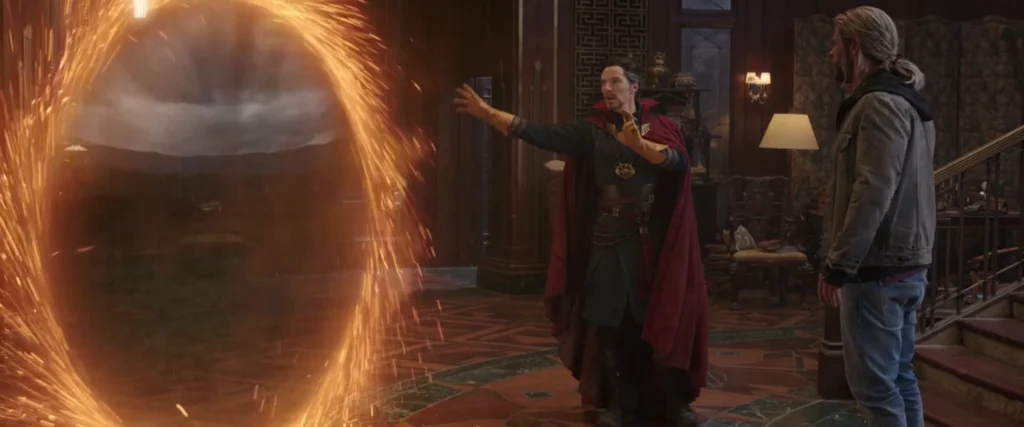What if the Marvel Universe was never just fiction—but a simulation waiting to be revealed?
This is quite an unusual post for me, considering my usual focus on Singapore’s politics.
However, the Marvel Cinematic Universe (MCU)—with its extraordinary characters and their incredible abilities—has always fascinated audiences worldwide, including myself.
I often find myself contemplating both the possibilities and impossibilities of such a world.
Recently, while pondering the Quantum Realm in the middle of the night, a random StarTalk video by Neil deGrasse Tyson about 4D beings popped up for me. It occurred to me that while such phenomena may be physically impossible, the characters and materials in the Marvel Universe could instead be vector-rendered into reality—suddenly making everything make sense.
One question that comes to mind is: “Could the Marvel Universe function under real-world physics, or is it more plausible in a simulated system?”
Superheros and their physics-defying powers

Quantum realm in Ant-Man and The Wasp: Quantumania (Marvel/Disney)
Take Ant-Man, for example. If he can shrink infinitely without disrupting atomic structure, doesn’t that suggest reality is being re-rendered rather than physically compressed?
In traditional physics, objects cannot shrink infinitely while maintaining their structure. Atoms exist at the microscopic level, and beyond that, we enter the domain of waveforms of energy, not miniature cities and towns as depicted in the films.
However, if the Marvel Universe were a simulation, it might function like a vector-based digital environment rather than a pixel-based one.
This would imply:
- Superheroes like Ant-Man don’t physically shrink; instead, their scale parameter is adjusted, much like resizing an image in a vector graphics program.
- Time and space are computed dynamically rather than being absolute.
- The Quantum Realm acts as the system’s computational backend, where the fundamental laws of the universe can be rewritten.
- Superpowers as Code Exploits or Admin Privileges
- If the Marvel Universe is a simulation, could superpowers simply be system exploits?
Characters like Doctor Strange may actually be hacking reality’s code, much like a developer modifying AI behaviours in a digital world.

Dr Strange opening a portal for Thor in Ragnarok (Marvel/Disney)
For example, Doctor Strange’s Sling Ring could function as an admin command, allowing him to jump between predefined vector coordinates tied to Earth.
Rather than bending space-time, the ring might act as a shortcut in the simulation, akin to accessing preloaded locations rather than physically traversing dimensions.
Similarly, speedsters like Quicksilver could be exploiting a glitch in movement physics, bypassing the normal constraints of air resistance and inertia.
Instead of truly interacting with their environment in real-time, their movement might be calculated separately from physical forces, much like a video game character using a “no-clip” cheat to move through walls.
This would explain why they don’t experience the catastrophic effects of moving at extreme speeds, such as vaporizing due to friction or causing massive shockwaves with every step.
Other examples include:
- Hulk’s strength as an uncapped variable that scales with emotional intensity.
- Doctor Strange’s magic is direct code manipulation, rewriting physics like a programmer tweaking AI behaviours.
- Deadpool’s self-awareness suggests he has read access to system logs, enabling him to break the fourth wall.
- Wanda (Scarlet Witch): Her “hex powers” could be corrupting localized areas of the simulation and rewriting rules on the fly.
- Thor, His hammer, Mjolnir, has a whitelist authentication system (isWorthy = True), preventing unauthorized users and not restricting them due to weight.
The Multiverse: A Computed System of Branching Timelines
Another intriguing question arises: “How does the Marvel Multiverse determine when a timeline branches?”
In Marvel’s multiverse, alternate realities are designated with numerical identifiers (e.g., Earth-616, Earth-199999), but notably, not every decision results in a new universe—only significant branching events seem to create distinct timelines.
This mirrors how computers optimize storage, creating new instances only when major divergences occur, rather than duplicating every minor variation.
If the Marvel Universe is a simulated system, its multiversal structure may function like a dynamically computed branching system, where only the most critical forks in the timeline are recorded as distinct instances.
The Time Variance Authority (TVA), as seen in Loki, behaves less like a traditional time-policing agency and more like a database maintenance function, actively pruning redundant or unnecessary universes to prevent system overload.
If the Marvel Universe is a computed simulation, then time may not be a continuous flow but instead a state-based system, where each moment exists as an individual frame that can be accessed, altered, or even rolled back like a save state in a game.
In this structure:
- The present is merely the active frame loaded at any given moment.
- The past isn’t truly “gone”; it’s a stored state that can be accessed, like rewinding a file history.
- The future isn’t “predetermined” but could exist as probabilistic branches computed in real time.
- This also explains why the TVA does not function as traditional time travellers but instead operates as a system regulator, maintaining the structural integrity of computed branches.
The Time Variance Authority: A Database Maintenance Function
One of the most jarring aspects of the TVA is its mundane, bureaucratic aesthetic, which feels out of place in a universe teeming with celestial titans, gods, and cosmic forces.
Compared to powerful beings like Thanos, Hela, or Odin, the TVA’s office-like structure, outdated technology, and mundane dress code make them seem almost comically unremarkable.
However, this aesthetic could be deliberate—it suggests that the TVA does not operate within the normal constraints of power seen in the Marvel Universe.
Their strength does not come from brute force or divine authority but from their higher-level system control over time itself.
Unlike Thanos, who seeks control through raw power and the Infinity Stones, the TVA’s power lies in administrative authority over the timeline’s very fabric.
If the Marvel Universe is a simulated system, then the TVA is not designed for combat, but rather for maintenance and oversight.
Their retro-bureaucratic style reflects their function as system regulators rather than warriors—an embodiment of the idea that ultimate power comes not from destruction but from control over the fundamental rules of reality.
Instead of enforcing time as an immutable sequence, the TVA manages it as a state-based system, where each event is logged, stored, and, if necessary, erased or rewritten.
This explains why:
- Variants aren’t permanently erased but are instead pruned, akin to removing outdated data from a system.
- Deleted individuals can be restored, much like retrieving data from an archived backup.
- The TVA asks Loki to sign a transcript of everything he has said, which mirrors audit logs in database systems, ensuring that his stored data matches recorded history before proceeding.
The TVA doesn’t function as a conventional time-travelling agency but as a regulatory system that preserves the integrity of predefined timeline states.
Like an IT system maintaining only essential data, the TVA keeps the Sacred Timeline optimized and prevents excessive branching that could cause system instability.
From this perspective, death is merely a state change, not a final event. If a character or event is deemed necessary for the stability of the system, they can be reinstated into existence, similar to restoring a critical system process.
The TVA’s role is less about morality and more about efficiency—ensuring the system runs smoothly without unnecessary variance.
The Watchers: Cosmic System Administrators or External Observers?
If the Marvel Universe is a simulated reality, could the Watchers be its system administrators or even external observers from the real world?
Their behaviour suggests they have privileged access to the system but are bound by certain restrictions.
The Watchers function like game developers or high-level moderators, tracking the simulation’s progress but unable (or unwilling) to alter its trajectory directly. To them, time is not a “river” but a static map they can navigate freely.
This concept is analogous to Flatland, a novel where two-dimensional beings are unaware of the full extent of the three-dimensional world above them.
Similarly, humans experience time as a forward-moving sequence, while the Watchers, as 4D entities, perceive all points in time as equally accessible.
They can “look down” at any point in history or the future, just as we might inspect an entire timeline in a video editing program, jumping to different moments at will.
This means they aren’t time travellers in the traditional sense—they are simply navigating the simulation’s stored states in ways that 3D beings cannot comprehend.
Is This the Ultimate Endgame of the Marvel Universe?
What if this is where the MCU has been leading all along?
It is not just a saga of superheroes and cosmic wars but also the slow revelation that everything in the Marvel Universe is a simulation—a carefully controlled digital construct run by an advanced space-faring civilization.
- The Watchers aren’t just cosmic observers—they are system moderators, mind-diving into the simulation to observe without interfering.
- The TVA doesn’t control time—it regulates a program, pruning rogue branches that threaten the integrity of the system.
- Superpowers aren’t magic or mutations—they are admin-level privileges or code exploits.
- Kang isn’t just a time-travelling villain—he’s a rogue administrator trying to rewrite the entire system in his favour.
- And the final, biggest twist of all—perhaps the MCU was never meant to be anything more than entertainment for an advanced civilization—just their version of TV drama.
Maybe this has been Marvel’s true endgame all along.
So, as we move deeper into the multiverse saga, the real question is no longer about how the Marvel Universe expands, but rather: When the story finally ends, will the MCU reveal that it was never just a cinematic universe—but a simulated one all along?
The post The Marvel Universe as a Simulated Reality appeared first on The Online Citizen.


